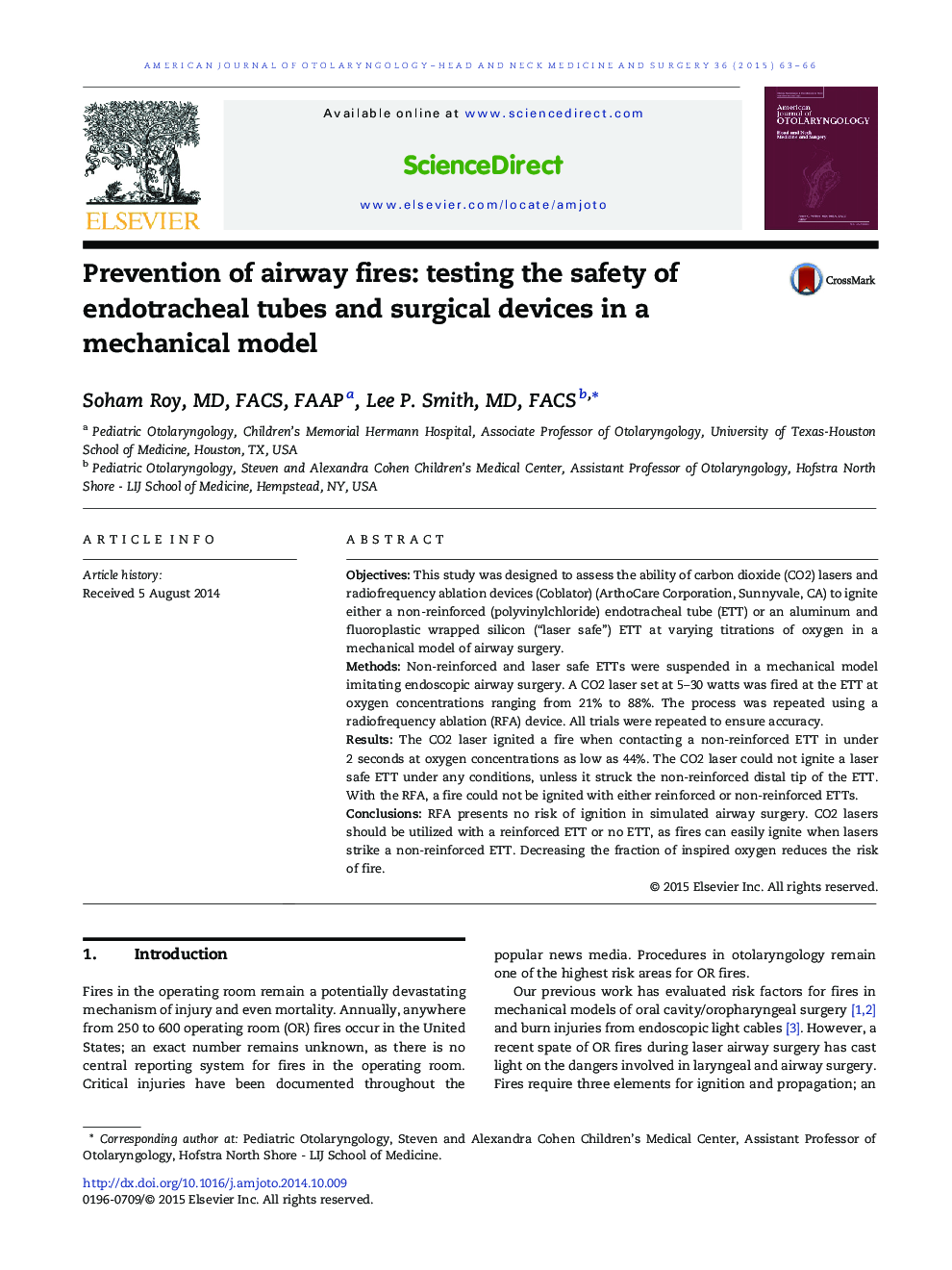| کد مقاله | کد نشریه | سال انتشار | مقاله انگلیسی | نسخه تمام متن |
|---|---|---|---|---|
| 4103007 | 1605239 | 2015 | 4 صفحه PDF | دانلود رایگان |
ObjectivesThis study was designed to assess the ability of carbon dioxide (CO2) lasers and radiofrequency ablation devices (Coblator) (ArthoCare Corporation, Sunnyvale, CA) to ignite either a non-reinforced (polyvinylchloride) endotracheal tube (ETT) or an aluminum and fluoroplastic wrapped silicon (“laser safe") ETT at varying titrations of oxygen in a mechanical model of airway surgery.MethodsNon-reinforced and laser safe ETTs were suspended in a mechanical model imitating endoscopic airway surgery. A CO2 laser set at 5–30 watts was fired at the ETT at oxygen concentrations ranging from 21% to 88%. The process was repeated using a radiofrequency ablation (RFA) device. All trials were repeated to ensure accuracy.ResultsThe CO2 laser ignited a fire when contacting a non-reinforced ETT in under 2 seconds at oxygen concentrations as low as 44%. The CO2 laser could not ignite a laser safe ETT under any conditions, unless it struck the non-reinforced distal tip of the ETT. With the RFA, a fire could not be ignited with either reinforced or non-reinforced ETTs.ConclusionsRFA presents no risk of ignition in simulated airway surgery. CO2 lasers should be utilized with a reinforced ETT or no ETT, as fires can easily ignite when lasers strike a non-reinforced ETT. Decreasing the fraction of inspired oxygen reduces the risk of fire.
Journal: American Journal of Otolaryngology - Volume 36, Issue 1, January–February 2015, Pages 63–66
